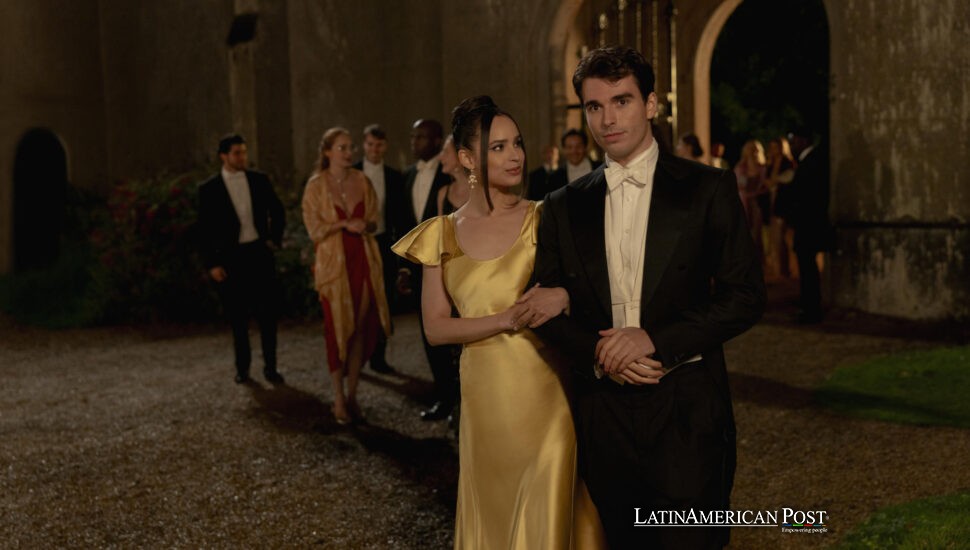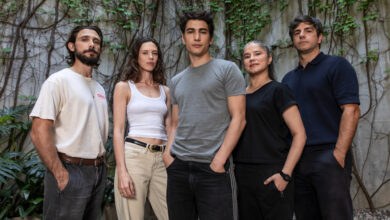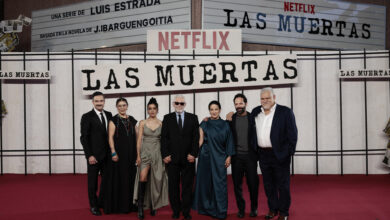Latin Love in Netflix’s My Oxford Year: How a Bilingual Heroine Rewrites Romance and Representation

Between cobbled quads and candlelit bike rides, My Oxford Year offers more than poetry and heartbreak—it places a driven Latina at the story’s center, asking what it means to love without losing your ambition, your roots, or yourself.
An Unlikely Romance Under Historic Spires
When Anna Alvarado first walks through the gates of Oxford’s Mansfield College, love is nowhere on her checklist. She’s already conquered Wall Street, graduated summa cum laude, and mapped out the next five years of her life. Romance? Maybe later.
That’s what makes her collision—literally—with Jamie Davenport in the Bodleian Library so jarring. He’s charming, maddeningly cryptic, and prone to quoting Tennyson during coffee runs. At first, Anna treats him like an Oxford eccentric—interesting, but not life-changing. But shared pub debates, riverside bike rides, and scribbled sonnets in the margins of borrowed poetry books slowly shift her calculus.
Jamie resists labels. Anna resists detours. But the more their stories intertwine, the harder it becomes to pretend the lines aren’t blurring. When a personal crisis forces hard choices, both are pushed to confront what connection means when neither is willing to surrender their path.
Director Iain Morris keeps the energy light, but there’s depth beneath the charm. This isn’t a film about romantic rescue—it’s about whether love can hold space for two people’s truths, even when those truths don’t align.
A Latina Lead Who Doesn’t Have to Explain Herself
For Sofia Carson, playing Anna felt personal. Not just because she related to the character’s ambition, but because Anna isn’t defined by her ethnicity—she’s allowed to be a fully complex human first.
“Anna is brilliant and bilingual, but the story doesn’t revolve around that,” Carson told EFE after an early screening. “Her identity is there, but it’s not treated like an obstacle she has to overcome.”
In a genre still saturated with Latin sidekicks, tropes, and trauma arcs, Anna is refreshing. She’s a Colombian–Puerto Rican woman who knows her Shakespeare and runs financial models. She FaceTimes her mom for arepa tips in Spanish, then turns around and defends metaphysical verse in an Oxford tutorial. The film never winks at her bilingualism. It doesn’t flatten her culture into spice. It just lets her exist.
That quiet normalization is a win. Hollywood has long struggled to portray Latina characters as leaders in high-academic or high-finance spaces. My Oxford Year takes that struggle and renders it irrelevant. Anna’s parents, immigrants to Queens, appear in flashbacks—hopeful, practical, proud—but their legacy isn’t one of struggle porn. It’s one of the possibilities.
Even Jamie’s clumsy attempt at Spanish during a family video call avoids caricature. There’s no punchline. Just effort and warmth—something rarely seen in mainstream romantic cinema when cross-cultural dynamics come into play.
Love, Autonomy, and the Power to Walk Away
Corey Mylchreest, known for playing royalty in Bridgerton’s spin-off Queen Charlotte, steps into deeper emotional terrain here. His Jamie is a man both open and elusive. Haunted by his brother’s death, he clings to the present while evading any vision of the future. His choices are messy. Often selfish. And yet intensely human.
“Jamie doesn’t behave the way we want him to,” Mylchreest said in a joint interview with Carson. “But I had to honor why he couldn’t promise her more.”
The film’s emotional climax doesn’t deliver a typical rom-com fix. Anna doesn’t beg. Jamie doesn’t suddenly see the light. Instead, they both recognize the tension between loving someone and trying to shape them. Anna never tries to change Jamie. She listens, sets boundaries, and makes a choice—not for him, but for herself.
That choice is what makes this film stand out. There’s no grand rescue. No savior narrative. No job quit for love. Anna stays in control of her timeline, even when her heart is breaking. It’s a portrait of modern romance rarely told with such care—especially when the woman is Latina.
It also challenges the audience. My Oxford Year suggests that love’s power isn’t in conquering obstacles or bending lives to fit together. It’s in letting go with grace when dreams diverge.
More Than a Genre Film—A Blueprint for Representation
For Netflix, My Oxford Year isn’t just a rom-com—it’s a subtle shift in how identity is woven into stories without becoming their core conflict. That’s part of what makes Sofia Carson’s casting so meaningful. She’s not checking boxes; she’s expanding the room.
Latino viewers don’t often see themselves in stories of elite academia or upper-crust romance, especially not without coded language, exoticization, or trauma framing. Anna’s character offers something radical in its simplicity: a chance to be brilliant, in love, and Latin—without compromise.
Carson said it best: “When young girls see someone like Anna reading Keats in an Oxford quad, they start imagining themselves there. That’s how change begins.”
The ripple effect extends beyond the screen. The production brought on Colombian dialect coaches, Latinx consultants, and even sourced authentic set pieces—like a family kitchen wall filled with bilingual sticky notes and devotional candles—that subtly deepen the realism.
Behind the scenes, too, there’s motion. While Latin creatives still represent under 6% of Hollywood writers, films like My Oxford Year prove that the appetite for multidimensional storytelling exists. Viewers want love stories that reflect how people live and love—in two languages, in blended cultures, in complexity.
My Oxford Year doesn’t end with a wedding. It ends with a walk—two people on different paths, meeting at a bridge, acknowledging the love that shaped them without needing it to define their futures. That restraint, that maturity, is its final gift.
Also Read: Keanu’s Watches Recovered: How Chile Became the FBI’s Unexpected Ally in a Hollywood Heist
For Latin viewers tired of being either erased or reduced, this film offers something new: a story where ambition and tenderness share space. Where choosing yourself isn’t framed as failure. And where a woman like Anna—driven, bilingual, deeply loved—gets to be the center of her narrative, no apologies required.




